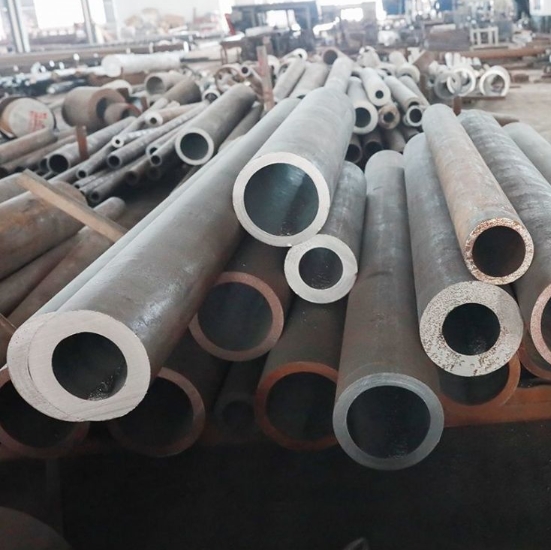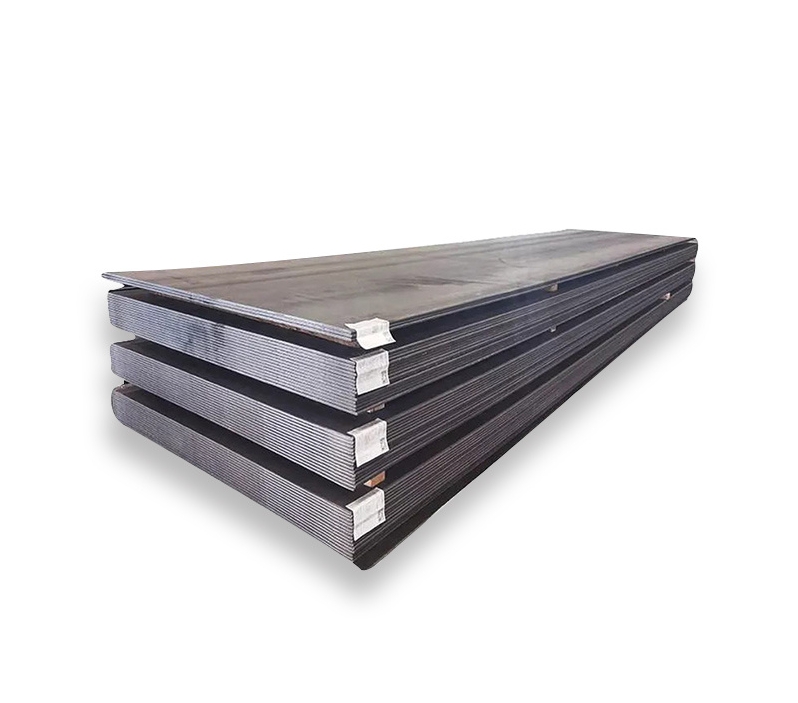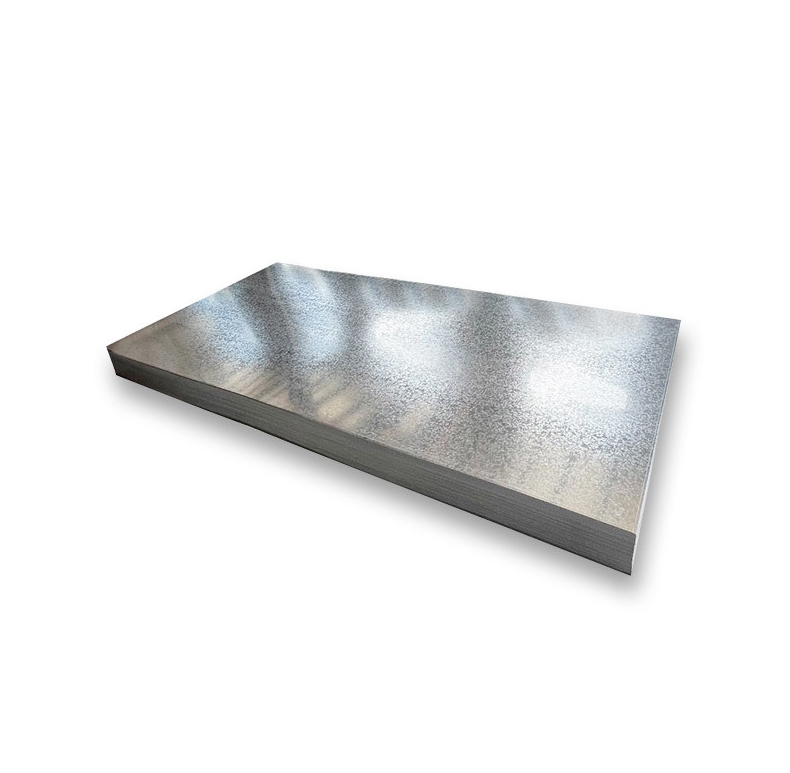We estimate typical market prices for SA514 Grade J pressure-vessel steel plate in 2025 to sit roughly in the range USD 650–900 per metric tonne globally depending on region, thickness and testing/traceability requirements; China-origin factory-direct orders (bulk, standard sizes, FOB China) commonly quote toward the lower end of that range while Europe and select U.S. suppliers quote higher. For time-critical or fully-tested plates (MTC, Charpy, NDT, HIC, PMI) expect a premium.
What SA514 / ASME SA514 Grade J means
We treat “SA514” and the widely referenced ASTM A514 family interchangeably when discussing high-yield, quenched-and-tempered alloy plate intended for structural and pressure applications. SA514/ASTM A514 is a specification covering high-yield strength, weldable, quenched and tempered alloy steel plates used in welded structures and pressure equipment; grades (A, B, C, E, F, H, J, K, M, P, Q, R, S, T etc.) vary mainly by chemistry while mechanical property targets are similar. The standard text and grade limits are published by ASTM/standards bodies.
Practical note. In many supplier catalogs you will see product labelled “SA514 GR.J” — that is the ASME/ASTM nomenclature adapted by mills and traders; always confirm the purchaser’s required standard (ASTM A514/A514M vs ASME SA514) and which edition/year.
Chemical composition & key differences by grade
Grade J belongs to the A514 family and has a controlled chemistry that balances high yield strength and formability. Typical maximum / nominal ranges published by mills and data sheets include carbon, manganese, silicon, phosphorus and trace alloying elements such as chromium and molybdenum. Exact maximums vary by grade and by supplier mill practice — always request the chemical limits for the lot and the mill’s MTC.
For procurement: require the mill Chemical Analysis table on the MTC, and confirm any additional element limits (e.g., Ni, Cu, V) if your downstream welds or corrosion environment are sensitive. Mill product pages and datasheets provide the per-grade breakdown which should be attached to quotations.
Mechanical properties and thickness/strength limits
A representative property set for A514 family plates (common across grades up through J) is:
-
Yield strength: ~690 MPa (100 ksi) for thicknesses ≤ 2.5 in (≈63 mm)
-
Ultimate tensile strength: typically 760–895 MPa (110–130 ksi) in many grades and thicknesses
-
For thicker plate ranges (> 2.5 in to 6 in), minimum yield strength reductions apply per the standard.
What to verify on your purchase order: the guaranteed yield and tensile values at the specified thickness, plus minimum elongation and Charpy V-notch requirements (if low-temperature performance is needed).
Heat treatment and mill processing
SA514 plates are quenched and tempered in production to achieve the high yield values. Some grades or thicknesses may require normalization prior to quench/temper depending on the supplier’s manufacturing route. For critical pressure-vessel use, buyers commonly specify:
-
Mill heat-treatment records on the MTC.
-
Hardness limits to ensure no local over-hard zones.
-
If additional thermal stress relief is required post-fabrication, specify procedure and acceptance criteria up front.

Typical dimensions, tolerances and surface finishes
Available plate thickness range reported across mills and suppliers: 3 mm up to ~300 mm (practical commercial ranges for Grade J typically 6 mm–100 mm depending on mill capability). Widths and lengths vary — common stock widths 1500–4050 mm; lengths often 3000–15000 mm in mill productions. Surface prep options include shot-blasting, rust-preventive coating, or painted finish for export.
Fabrication, welding and post-weld treatment guidance
We recommend specifying the following when the plate will be welded into pressure systems:
-
Welding procedures qualified on the same or equivalent material (PWHT may or may not be required depending on design and thickness).
-
Preheat and interpass temperatures in the WPS.
-
Post-weld heat treatment (PWHT) only where the design requires it — PWHT can change local toughness and should be controlled.
-
Procedure and welder WPS/PQR qualification records as part of delivery documentation.
Always cross-reference the material’s Charpy V notch data with the vessel’s minimum service temperature. For heavy fabrication, discuss edge preparation and cutting tolerances with the mill or plate supplier prior to order confirmation.
Testing, inspection and paperwork buyers must request
For pressure vessel use we advise requiring:
-
Full Mill Test Certificate (EN 10204/3.1 or equivalent) listing chemical and mechanical test results.
-
Charpy impact tests at the purchaser-required temperature (if low-temperature service).
-
NDT reports (UT/RT if required for critical plate applications).
-
CoC, heat number traceability and weldability statements.
-
Optional: HIC testing, PMI/positive material identification, hardness records.
These items materially affect price and lead time — include them in RFQs so suppliers price apples-to-apples.
Common applications for Grade J plates
Typical uses include:
-
Pressure vessels (shells, heads) and boilers, especially where high strength allows weight reduction.
-
Heavy vehicles, cranes and lift frames where high yield and weldability reduce structure weight.
-
Offshore structures and hydraulic equipment when supplied with the correct impact toughness.
Global market pricing in 2025 — methodology and headwinds
How we built our 2025 pricing picture. We compared multiple current supplier price sheets and market reports (stockyard/merchant quotes, marketplace listings and regional price indices). Global price variance for this specialty plate is driven by:
-
Raw material (steel billet/plate) and scrap prices — primary driver for mill price.
-
Local mill capacity and product mix — certain regions produce more high-strength plate.
-
Testing and certification demand — full MTC, Charpy, NDT increase cost.
-
Logistics and trade policy — freight rates, import duties and inspection requirements.
-
Thickness and cutting/processing — thicker plate costs more per tonne due to production complexity.
Global price comparison — typical ranges in 2025
Below is a pragmatic comparison based on marketplaces, merchant listings and regional price services gathered in 2025. These are indicative ranges for standard SA514/A514 Grade J plate, metric tonne (USD/tonne), standard stock sizes, FOB / ex-works where noted. Always request an up-to-date PI.
| Region | Typical 2025 range (USD / metric tonne) | Notes / drivers |
|---|---|---|
| China (FOB) | USD 650 – 800 / t. | Wide exporter stock, competitive mills; lower labour and energy costs drive the low end. Sourcing via B2B platforms often shows $650–$800/t for standard grades. |
| India (FOB / Ex-works) | USD 720 – 860 / t. | Growing domestic capacity; competitive but slightly higher than China for specialty processed plate. |
| United States (ex-works / stockist) | USD 850 – 1,100 / t. | Domestic stockists & mills price higher due to tighter specs, higher mill costs and logistics. Retail stockists list A514 plate with higher per-ton equivalents. |
| Europe (ex-works) | USD 900 – 1,200 / t (≈€590–620/t recent plate indices). | Stringent testing, certification and localized costs push prices up; Fastmarkets/MEPS data show domestic plate indices in the €590–620/t band for certain plate products. |
| Middle East / Gulf (CIF) | USD 800 – 1,000 / t. | Import parity plus logistical handling, often sourced from Northeast Asia or Europe. |
Important: the ranges above reflect general merchant/supplier evidence collected from marketplaces, stockist listings and regional price bulletins; special treatments (Charpy at low temps, HIC, special surface) add USD 30–120/t depending on test scope and volume.
Price drivers & negotiating levers
When you negotiate price, consider:
-
Order quantity: bulk orders (hundreds of tonnes) attract mill discounts; small loads pay stockist premiums.
-
Standard vs certified test matrix: full MTC with Charpy and UT/RT is costlier.
-
Thickness and cutting: odd thicknesses or tight tolerances cost more.
-
Incoterm: FOB China factory vs CIF to port of destination changes landed cost substantially.
-
Delivery speed: urgent orders require premium freight and possible expedited mill scheduling.
-
Local duties & anti-dumping: these can be major adders for certain country/grade imports.
Ask suppliers to itemize the quotation (base plate, testing, processing, packing, freight) so you can compare line by line.
Why choose Luokaiwei
We manufacture and supply SA514 Grade J plates from China. Our core offers:
-
Factory-direct pricing: we quote factory prices that remove intermediate trader margins — this typically places our FOB China quotes at or below the lower bound of regional merchant ranges. (Claim based on our direct mill channel.)
-
Customization: cut-to-size, surface preparation, drilling/punching and special MTC/test packages on request.
-
Stock & fast delivery: standard plate sizes and popular thicknesses are held in inventory; stocked items can be dispatched faster than custom mill runs.
-
Traceability & certifications: we supply EN/EN-3.1/3.2 style MTCs, Charpy and UT/RT reports where required.
-
Export experience: packaging for sea freight, stuffing and customs documentation handled by our export team.
When you send an RFQ to us include required grade (SA514 Gr.J), thickness, required tests and delivery INCOTERM so we can give a precise, comparable quote.
Buying checklist / procurement template
When issuing RFQ include:
-
Grade and standard (ASME SA514 / ASTM A514; edition/year)
-
Thickness, width range and length requirement
-
Quantity (tonnes or pieces)
-
Required testing (MTC 3.1/3.2, Charpy temp, UT/RT/RT)
-
Surface finish and packaging needs
-
Delivery INCOTERM (FOB, CIF, EXW) and destination port
-
Requested lead-time and inspection right (3rd party if required)
This avoids hidden extras on the PI.
Lead times, packing and shipping
Typical lead times:
-
Stock items: 7–21 days for pickup and documentation (depending on size and testing).
-
Custom mill runs (non-stock thickness/heat treatment): 30–70 days depending on mill schedule and production complexity.
-
Expedited runs: available for premium.
Packaging: export timber/film wrap and seaworthy skids; heavy plates often bunded and strapped. For critical projects we recommend FOB plus container consolidation or bulk breakbulk with lashing and anti-corrosion packing.
FAQs
Q1 — What paperwork must I insist on for pressure vessel use?
A1 — Full mill test certificate (EN 10204 3.1 or equivalent), heat number traceability, Charpy V-notch impact test certificates at the required temperature, and any NDT (UT/RT) reports. If you require HIC or PMI, list it in the RFQ.
Q2 — Are SA514 and A514 the same?
A2 — The terms are used interchangeably in industry. “A514” is the ASTM designation; “SA514” can appear in ASME or supplier literature but refer to the same family of high-yield quenched and tempered plates. Confirm the edition/clauses on the PO.
Q3 — How much extra does Charpy testing add to price?
A3 — It depends on the sample count and test temperature; typical small-order premiums range from USD 30–120 per tonne equivalent when the supplier amortizes test cost. For large production heats the per-tonne impact is smaller. Request sample plan and cost breakdown in quotation.
Q4 — Can I get SA514 Grade J in thicker sections (>100 mm)?
A4 — Availability reduces with thickness for certain grades; mills publish maximum thickness per grade. For very thick sections mills may recommend alternative grades or special processing. Always confirm with mill data.
Q5 — Is there a big quality difference between Chinese and Western mills for SA514?
A5 — Quality is not binary by country; it depends on the producing mill, specific heat control, and the specified test matrix. Chinese mills supply large volumes competitively; Western mills often charge more but may offer shorter domestic logistics and different certification pathways. Insist on MTCs, independent inspection and sample testing when quality is critical. Market listings show China often supplies lower FOB price bands.








